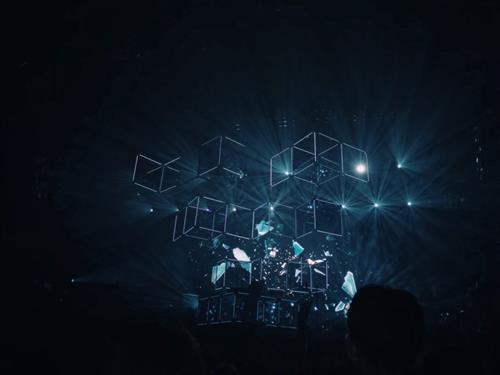-
Check out our Wonder of Water collection here:
Check out inaugural collection from Ladera Vista students here!
Ladera Vista Elements NFT collection
-
As part of our commitment to providing an innovative and personalized learning experience, Fullerton School District embraces new technologies and values exploring how they might help students and families.
One example:
An example of this is the Visible Innovation Program, the initiative which provided students with iPads in the 5th through 8th grade, launched several years ago, having grown out of the district’s cutting edge one to one laptop program started in 2010. This program has been expanded to include grades 3 and 4, funded by the district. Sites have provided funds to help students in Kindergarten through 2nd grade have access to devices.
This is just an example.
Web 1, 2 and 3.
Currently, NFTs or non-fungible tokens are a part of what’s being called Web 3.0. A very brief history of the internet and some of its technologies may be helpful.
Think of Web 1.0 as a blackboard or chalkboard or a community bulletin board. A user could write a message and post it on the internet, and another user could read it. This functionality is “read-write” functionality. An example of this could be a “traditional” website for a company or for a school. A catch phrase for this era would be: “Everyone is a reader online” or “Everyone can read what’s online.”
The advent of Web 2.0 was exciting because it offered more than just a place or a method to post information. Web 2.0 was the “interactive” web, which allowed users to create and share their own content, and react to and engage with user-created content. Social media is a hallmark of Web 2.0, and one of the earliest forms might be a blog where users could write and post articles and other users could not only read but could leave comments with the article author. A catch phrase for this era might be: “Everyone is an author online” or “Everyone can write and post online.”
Somewhere along the line, e-commerce took shape, developing from the first online catalogs that were almost like traditional paper catalogs you could thumb through and consider what to order in the mail, to mega e-commerce sites like Amazon where you can curate wish lists, store your payment information, order from multiple vendors in one place and have items shipped to your door, sometimes the very same day.
Web 3.0 takes e-commerce and the ability to write or create online content into the arena of ownership. Blockchain offers a way to document or create ledgers of ownership.
TLDR? KEY POINTS BELO:
- Blockchain is a type of shared database that differs from a typical database in the way that it stores information; blockchains store data in blocks that are then linked together via cryptography.
- As new data comes in, it is entered into a fresh block. Once the block is filled with data, it is chained onto the previous block, which makes the data chained together in chronological order.
- Different types of information can be stored on a blockchain, but the most common use so far has been as a ledger for transactions.
- In Bitcoin’s case, blockchain is used in a decentralized way so that no single person or group has control—rather, all users collectively retain control.
- Decentralized blockchains are immutable, which means that the data entered is irreversible. For Bitcoin, this means that transactions are permanently recorded and viewable to anyone.
NFT’s or non-fungible tokens are essentially items that one can own, that are made with blockchain technology.
Most NFTs are part of the Ethereum blockchain. Ethereum is a cryptocurrency, like bitcoin or dogecoin, but its blockchain also supports these NFTs, which store extra information that makes them work differently from, say, an ETH coin. NFTs can really be anything digital (such as drawings, music, your brain downloaded and turned into an AI), but a lot of the current excitement is around using the tech to sell digital art.
We view NFT’s as a way that student artists can offer ownership of their art to a wide and authentic audience. Our Web 3.0 pilot started with a few students from Ladera Vista Junior High School of the Arts in the ceramics class. We took digital images of their ceramic pieces of art, and then in our district Open Sea account, we “minted” or uploaded the digital images of their ceramic art and offered them for sale.
Check out our Wonder of Water collection here:
Ladera Vista Elements NFT collectionCheck out inaugural collection from Ladera Vista students here!
Proceeds go back to the district to be distributed to the student artists as a way to help them pay for future learning opportunities, like a type of scholarship.


